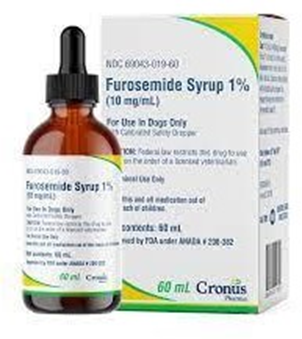The nurse is preparing to administer furosemide 80 mg PO daily. The amount available is furosemide oral solution 10mg/1mL. How many mL should the nurse administer? (Round to the nearest whole number and label your answer.)
The Correct Answer is ["8"]
To answer this question, the nurse needs to use the formula:
mL = (mg x 1 mL) / mg
where mg is the prescribed dose and mL is the available dose. Plugging in the values, we get:
mL = (80 mg x 1 mL) / 10 mg mL = 8 mL
Therefore, the nurse should administer 8 mL of furosemide oral solution.

Nursing Test Bank
Naxlex Comprehensive Predictor Exams
Related Questions
Correct Answer is D
Explanation
A. While standard precautions should be followed, the use of sterile gloves for routine care related to pertussis is not necessary.
B. Placing a surgical mask on the client during transportation may help prevent the spread of respiratory droplets but is not a comprehensive infection control measure.
C. Wearing a gown for all client cares is unnecessary and may not be practical.
D. Wearing a mask when providing care within 10 feet of the client helps reduce the risk of droplet transmission of pertussis.
Correct Answer is A
Explanation
A. Standard precautions include the use of gloves, gowns, masks, eye protection, or face shields, depending on the anticipated exposure. Wearing gloves and a gown is appropriate when there is a risk of exposure to bodily fluids, which can occur when bathing a client with open skin lesions. This approach helps prevent the transmission of infections.
B. The UAP does not need to wear gloves when taking blood pressures on all clients unless there is a risk of exposure to blood or body fluids.
C. While wearing gloves, a gown, and an N95 mask may be appropriate for certain situations involving airborne precautions (e.g., tuberculosis), it is not necessary for standard precautions when caring for a client with diarrhea.
D. This is an overuse of gloves and does not align with standard precautions, which recommend using gloves only when there is or may be contact with blood, bodily fluids, secretions, excretions, contaminated items, or mucous membranes.
Whether you are a student looking to ace your exams or a practicing nurse seeking to enhance your expertise , our nursing education contents will empower you with the confidence and competence to make a difference in the lives of patients and become a respected leader in the healthcare field.
Visit Naxlex, invest in your future and unlock endless possibilities with our unparalleled nursing education contents today
Report Wrong Answer on the Current Question
Do you disagree with the answer? If yes, what is your expected answer? Explain.
Kindly be descriptive with the issue you are facing.
